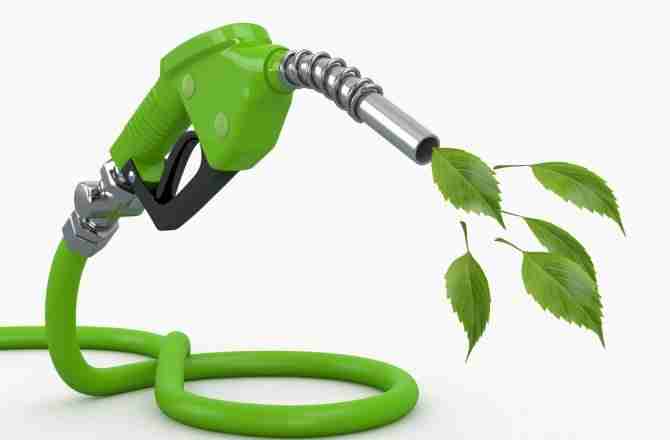Nanotechnology and Biofuel
May 23, 2022 2022-05-25 4:43Nanotechnology and Biofuel
These days due to the non-renewable nature of fossil fuels and the negative impacts that they cause, the need to find alternative energy sources is on the rise. Thus, renewable energy sources have been considered as one of the alternatives, as they are cleaner, environment-friendly, and can contribute to sustainable development.
Biofuel has become significant nowadays as an alternative fuel to other non-renewable fuels. In the need to find suitable biomass for biofuel, microalgae cultivation has taken the spotlight because of several aspects like
(i) they do not clash with human or animal food chains
(ii) are rich in carbohydrate, protein, and oil content
(iii) can grow in aqueous media, for example, wastewater, freshwater, saline water, etc.
(iv) need low water
(v) have the capability to grow for the whole year
(vi) can be cultivated in the waste dump areas like industrial and municipal waste drainage, or in ponds
(vii) develop sustainable oxygen generation system and
(viii) diminishing Carbon dioxide in the atmosphere by using it for photosynthesis. In addition, microalgae have a short harvesting life cycle and yield biomass that give high productivity of biofuel. Numerous biofuels such as bioethanol, biodiesel, bio-oil, bio-methane, bio-hydrogen, and others have been extracted from microalgae. Interestingly, microalgae convey a colossal measure of sugars, protein, and lipid, which is important in biofuel production.
In recent days, nano-technology integration with bioenergy applications has brought a revolutionary impact on biofuel conversion processes. To increase the yield of biofuel and improve its efficiency nano-technology has been initiated via nano-additives such as nano-magnets, nano-crystals, nano-fibres, nano-droplets, etc.
Nanotechnology can be used in different stages ranging from microalgae cultivation to microalgae-biofuel production. According to different studies, the application of nanotechnology has enhanced the cultivation of microalgae. Nanomaterials like nano-fibres, nano-particles, nano-tubes, nano-sheets, and other nanostructures, have been seen to be an effective nano-catalyst in direct and indirect approaches to biofuel (e.g., bioethanol, biodiesel, biomethane, etc.) yield enhancement. For example, magnetic nanoparticles were used as a carrier for enzyme immobilization for bioethanol and biodiesel generation effectively.
The incorporation of nanoparticles in microalgae cultivation (e.g., cell suspension, cell separation, and cell harvesting) has amplified the overall yield of microalgae.
In spite of the fact that the application of nano-additives played a huge role in microalgae cultivation, harvesting, conversion to biofuel, and biofuel applications to enhance efficiency, some challenges remain to be addressed. One of the challenges seen is that most of the nano-additives from experimental research are not well-characterized in terms of particle size, shape, and size distribution as well as clustering. Scientists are working toward addressing the challenges and creating a sustainable solution to making biofuel feasible for use.
Authored by Christa Biju, BITS Biocon Certificate Program in Applied Industrial Microbiology, Batch 8
References: 1. Gholami, A., Pourfayaz, F., Maleki, A.(2020). Recent Advances of Biodiesel Production Using Ionic Liquids Supported on Nanoporous Materials as Catalysts: A Review. Frontiers in Energy Research. https://doi.org/10.3389/fenrg.2020.00144. 2. Goh, B.H.H., Ong, H.C., Cheah, M.Y.,etal.(2019). Sustainability of direct biodiesel synthesis from microalgae biomass: a critical review. Renew Sust Energy Rev.107:59–74. DOI: 10.1016/j.rser.2019.02.012 3. Hossain,N., Mahlia, T.M.I., Saidur, R.(2019). Latest development in microalgae biofuel production with nano-additives. Biotechnology for Biofuels, Volume 12,125. https://doi.org/10.1186/s13068-019-1465-0 4. Laurens LML, Chen-Glasser M, McMillan JD. (2017). A perspective on renewable bioenergy from photosynthetic algae as feedstock for biofuels and bioproducts. Algal Research.Elsevier. 24:261–4. http://dx.doi.org/10.1016/j.algal.2017.04.002. 5. Safarik, I., Prochazkova, G., Pospiskova, K., Branyik, T. (2016). Magnetically modified microalgae and their applications. Critical Review Biotechnology. 36:931–41. doi: 10.3109/07388551.2015.1064085.








